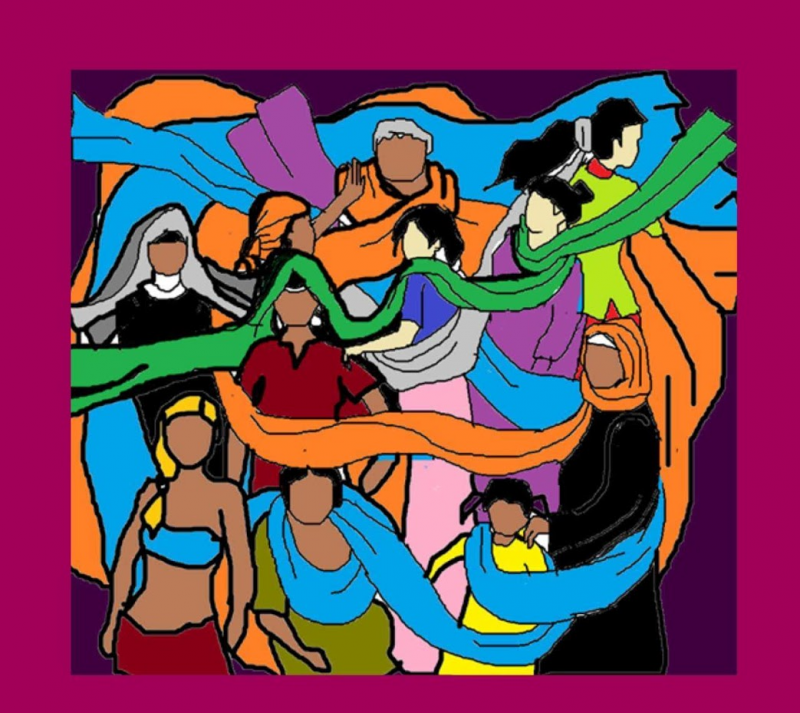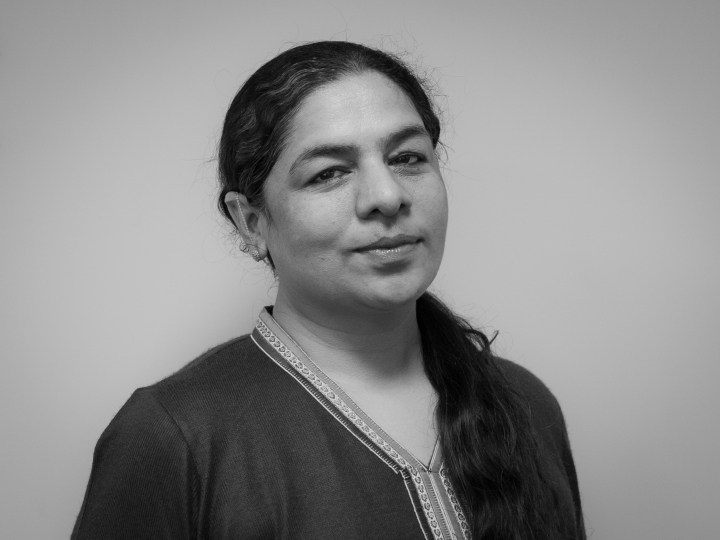In Kashmir and Manipur, continuous army presence and the impunity under the Armed Forces Special Powers Act (AFSPA) has made their pervasive crimes – sexual assault, rape, and forced disappearances – against the residents nearly impossible to fight. Womens’ collectives like the "Association of parents of disappeared persons" in Kashmir and Meira Paibi ("Women torch bearers") in Manipur have been at the forefront of protesting state repression – particularly by the army personnel. Irom Sharmila was on a hunger strike against AFSPA for a record period of 16 years.
Nari Adalats ("Women’s Courts"), an initiative of members of a central government initiative, Mahila Samakhya, emerged in the mid-1990s as a grassroot response to violence against women. As of 2014, 30 410 cases had been heard by the 481 active Nari Adalats located across 11 Indian states.
In 2006, Data Sain founded the Gulabi Gang (“The Pink Gang”) in response to the lack of police support for victims of domestic violence. The group helps to prevent abuse of women and children by training them in self-defense and economic independence. As of 2014, it is estimated that 270 000 people are members of the Gulabi Gang.
In a country with progressive laws and very little implementation, the Campaign to Monitor the Implementation of the SC/ST Prevention of Atrocities Act Karnataka (CMASK) in Karnataka, led by Yashodha P. for the last decade, has made history by holding the government accountable for flouting its rules and the lack of convictions.
On 24th January 2009, a group of young men and women in Mangalore were attacked by the members of the Sri Ram Sena (“The Army of Lord Rama”, SRS) for "sabotaging" Indian culture by going to a pub. In response, Nisha Susan, a journalist, launched a Facebook group called "Consortium of Pub-Going, Loose and Forward Women" on 5th February 2009. This group started the "Pink Chaddi [underwear] Campaign" sending pink undergarments to Pramod Muthalik, the head of the SRS. The irreverence of the campaign to the "so-called saviours of culture" and humor succeeded in delegitimizing this kind of violence.
The Pinjra Tod (“Break the Cage”) movement in 2015 started in response to an order imposing an early curfew on women students of Jamia Millia Islamia University in New Delhi. It spread across Delhi and to several universities and colleges across India. Pinjra Tod activists wrote: “This binary of the ‘good woman’ and the ‘bad woman’ is the same as ‘national’ and ‘anti-national’. (We) refuse to live by their patriarchal, casteist diktats […]".
As the #MeToo campaign took off worldwide, in India sexual predators in the academia were called out in 2017 via the "List of Sexual Harassers in Academia", compiled by Raya Sarkar. This spread to the film industry and to electronic and print media.

Women uniting across class, caste and occupation
The last 25 years has seen a rise in women-led workers unions in tea estates, textile and garment factories, among domestic workers, beedi workers and sex workers. In this period, we have also seen the emergence of leaders like Medha Patkar, who led people against destructive "development", and Aruna Roy whose work led to three national campaigns for the rights to food, work and information. Soni Sori, C. K. Janu and several Adivasi (tribal) women leaders have fought the misappropriation of traditional Adivasi homelands. There has been a strong mobilization for LGBT rights with nationwide protests and the successful legal challenge of Section 377 of the India Penal Code which criminalised "unnatural sex".
The year 2020 witnessed a historic outpouring of women and youth in the protests the Citizenship Amendment Act of 2019. The protests have drawn together women and youth from more diverse identities. Creative dissent and a unexpectedly high participation of college students and Muslim women have been a hallmark of these protests. Many, including me, are eager to join such meetings often. They have become spaces to meet and make friends, sing songs, experience acts of solidarity, listen to the young and the old arguing about citizenship and constitutional laws and speak about our children and their dreams and ours. With the break of the COVID 19 pandemic all the women at these protests have been disbursed and are back into the isolation of their homes.
The NHRF invites different actors within the human rights field to contribute on this blog. The opinions expressed here are those of the authors.

